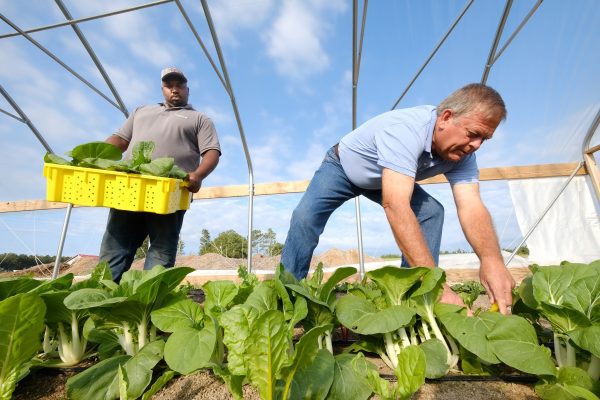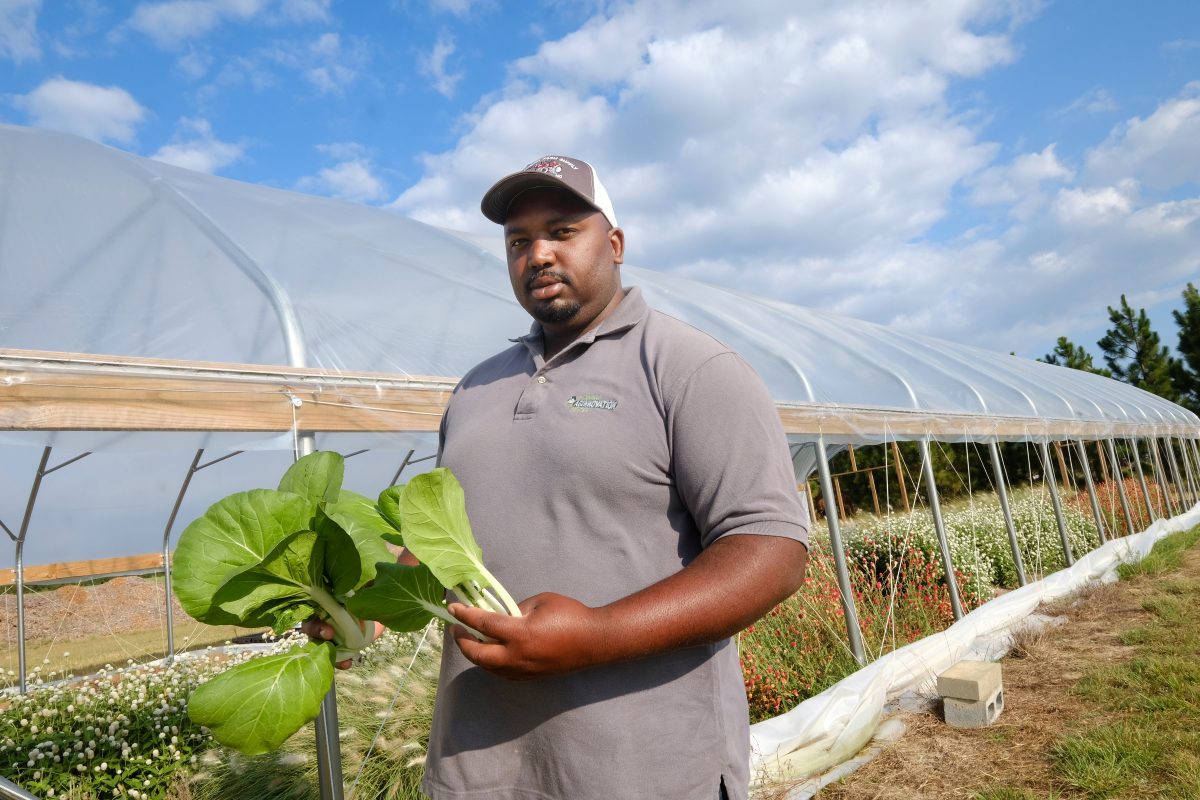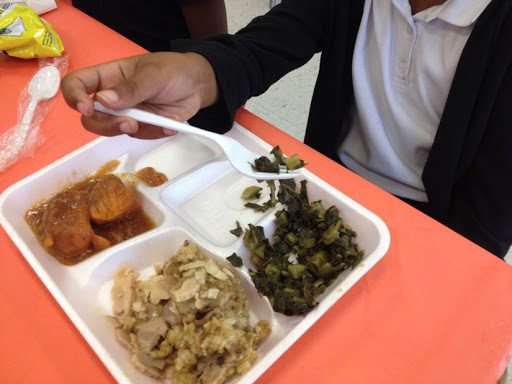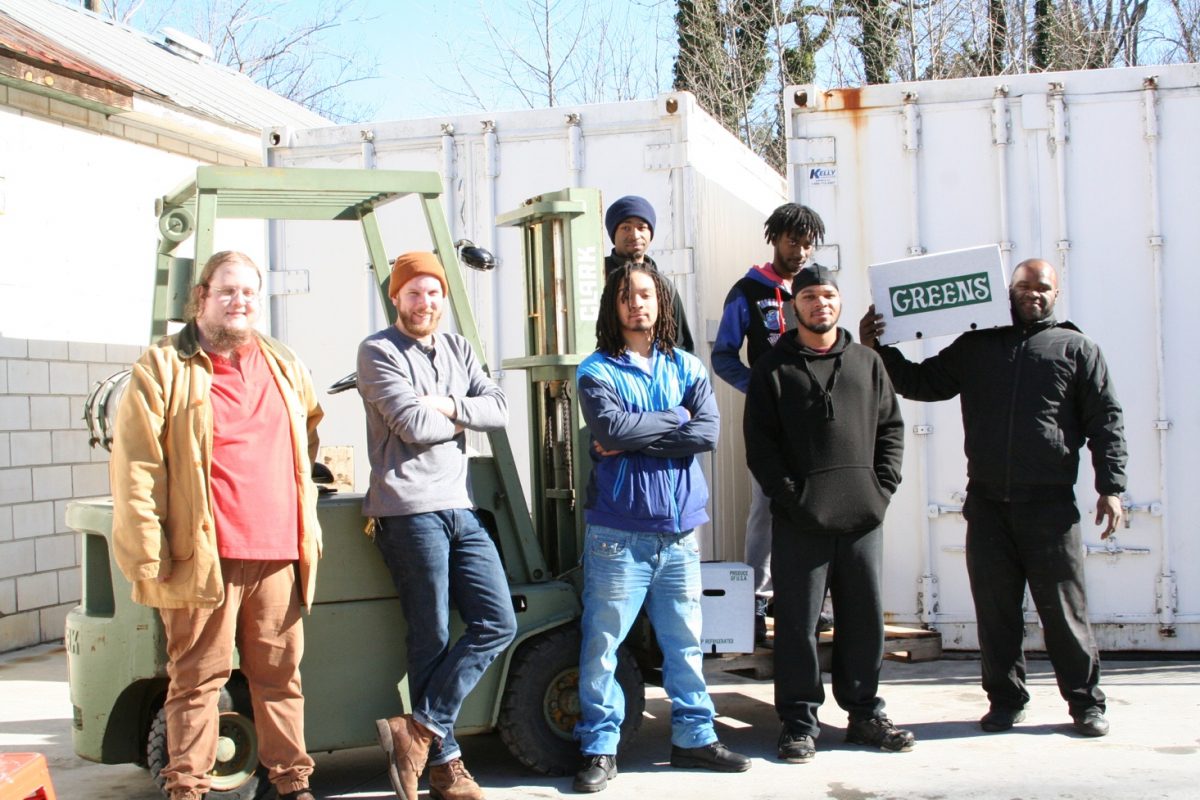Why intermediaries are key to viable local food systems

Growing and buying local food is a business: complex, rich in heritage and culture, essential to health and well-being, consumed by all but understood by few.
The Carolinas Urban-Rural ConnectionA special project from the UNC Charlotte Urban Institute |
|---|
We learned from our Carolinas Urban-Rural Connection regional food systems research that farmers who become part of the wholesale food supply chain are able to increase the economic viability of their crops. However, this commitment not only requires more investment and education than selling directly to consumers, it also requires the support of many partners or intermediaries along the way.
The pounds of squash, sweet potatoes and collard greens offered across the region at farm stands, farmers markets and grocery stores often don’t come with a label that indicates precisely where they were grown or how far they traveled. When we think about farmers we picture rolling fields and herds of cows, but rarely put much thought into how that food gets to our tables.
That’s where food intermediaries come in — they’re the crucial links in the food supply value chain that move food from farms to tables at restaurants, institutions and our homes. Intermediaries include players such as the farmers, brokers, buyers, movers, processors, manufacturers, wholesalers and retailers that can all reduce costs and improve quality at their respective steps of the value chain.
However you access food, you are part of a business supply chain or value add supply chain. In addition to intermediaries such as post-harvesting and processing facilities, distribution networks and retail outlets, one of the most valued entities in the food value chain is the consumer.
According to research conducted by Community Food Strategies in 2017, only 18 percent of the more than 10 million people in North Carolina eat more than 5 servings of fruit and vegetables per day. Across the state, only 9 percent of farms have direct to consumer sales. Most work through intermediaries.
The food value supply chain

The food supply value chain. Graphic by Laura Simmons
The goal of a value chain is to reduce costs and maximize profits for the producers and increase the value of the food supply for consumers. So, reducing the cost of inputs, or expediting transportation and distribution, are ways in which value is added for the consumer and profit is added for the farmer.
Grocery stores serve as a retail market value chain entity. At several major grocery retailers, including Lowes Foods, Food Lion, Publix, Piggly Wiggly, and Harris Teeter, consumers can find both fresh and processed products made in North Carolina. The N.C. Department of Agriculture and Consumer Services ‘Got to be NC’ initiative works with grocers to promote local products and help them not only reserve a spot on the shelf but also get noticed by consumers.
The following illustrates three different types of regional food system intermediaries.
For-Profit Intermediary: FreshPoint
FreshPoint is a processing and distribution food value chain entity serving the 32-county Carolinas Urban-Rural Connection study region. FreshPoint is a division of Sysco Foods, and serves as an intermediary in the nation’s produce supply chain. The company is North America’s largest wholly-owned produce distributor. FreshPoint Charlotte was originally Overton Distributors, which operated as a fresh produce wholesale provider in the Southeast for over 70 years before it was acquired.
The growing market desire for the availability of fresh, locally grown foods by consumers and chefs influenced Sysco Foods’ purchase of FreshPoint in 2000. FreshPoint’s online produce ‘Availability Guide’ presents its buyers with the knowledge and availability of every major commodity and specialty they offer. So, if a wholesale food buyer or chef is in need of baby bok choy and arugula in December, FreshPoint can deliver these year-round leafy green vegetables and track which local farms within 250 miles of their location supplied the order. However, if they want baby fava beans or baby kiwi in December, they would be out of luck.
Beyond tracking the availability of produce, FreshPoint has created a purchasing hierarchy which dictates to buyers which farmers to buy from first, according to Lauren Horning, the company’s Charlotte and Raleigh regional local and organic specialist. The priority is to purchase from the local smaller farms first; if they are not able to fill the order, the remaining request is met by local mid-size farms. If necessary, large (but still local) agribusiness farms are used to complete the order.
Horning said she actively tries to work with small, local farmers, but growers must be ready to meet the buyer’s needs. The two biggest hurdles for small, local farmers, she said, are first simply being found by intermediaries like FreshPoint, then managing the logistics to get their products from the farm into the 18,000 square-foot Charlotte warehouse located on Distribution Center Drive. She often finds local farmers who need a buyer via word-of-mouth from a fellow grower FreshPoint is already working with.
Horning spends a lot of her time working with farmers to crop-plan and prepare them for the wholesale market. The daughter of an ag-extension agent, and a former Foster-Caviness local farm liaison and director of sustainability, she was hired by FreshPoint to build their local and organic food system. About 10 percent of the farmers she is working with are under 35, and many are quite savvy about what it takes to be a wholesale provider.
“In the wholesale industry, we welcome the opportunity to work with all farmers and farm sizes, from seven to 70-plus acres. If they are growing the products needed, we want to buy them,” said Horning.
The biggest obstacle is having enough product to meet the wholesale market’s needs. Communicating with buyers weekly on what’s available is crucial. The farmer’s produce also needs to be of the appropriate quality, so it’s not rejected. And farmers have to be able to work for a price that is acceptable to the general market. If a farmer can’t meet those conditions, they may not be ready or interested in wholesale distribution and may consider other direct sale customer outlets.
As of September 2019, FreshPoint buyers have purchased approximately 99,500 pounds of local produce from 24 farms within the study region, adding more than $1.4 million in wholesale produce value to the regional economy. The company is on pace to exceed the 105,000 pounds of local produce purchased by FreshPoint in all of 2018, with a wholesale value of approximately $1.9 million. Interest among farmers is growing, Horning said: sixteen of the FreshPoint wholesale farms are new for 2019.
var divElement = document.getElementById(‘viz1573576054083’); var vizElement = divElement.getElementsByTagName(‘object’)[0]; vizElement.style.width=’100%’;vizElement.style.height=(divElement.offsetWidth*0.75)+’px’; var scriptElement = document.createElement(‘script’); scriptElement.src = ‘https://public.tableau.com/javascripts/api/viz_v1.js’; vizElement.parentNode.insertBefore(scriptElement, vizElement);
Institutional Intermediary: Charlotte-Mecklenburg Schools
 Photo Gallery: Promoting agriculture in the Sandhills.
Photo Gallery: Promoting agriculture in the Sandhills.
An example of an institutional retail value chain entity is the Charlotte-Mecklenburg School (CMS) system. CMS budgets each year at least $100,000 for North Carolina produce purchases as part of the NC 10% Local Food Initiative, which encourages individuals and institutions to buy at least 10 percent of their produce from local farms.
For the 2019-2020 buying period, CMS has allocated $126,000 for local NC purchases reflecting more than 114,000 pounds of local produce. In its effort to reach the 10 percent goal, CMS’ 2019-20 targeted purchases include 10,800 pounds of strawberries, 14,000 pounds of apples, 7,000 pounds of sweet potatoes and 21,450 pounds of watermelon. Currently, CMS purchases over 313,000 pounds of cleaned, chopped and packaged romaine lettuce mostly from outside North Carolina annually at a purchase price of approximately $429,000.
CMS is hoping to leverage the appetite for local food into opportunities for students. According to Jody Francisco, the CMS Manager of Culinary Department, Community Partnerships and Family Engagement, the urban farm and hydroponics facility at Garinger High School serves as a pilot for CMS students to understand more about local food systems with hands-on experience.
Francisco envisions CMS maximizing its food value chain presence by supplying cafeterias with local foods grown by students that are Good Agricultural Practice- (GAP) certified so they can be part of the CMS wholesale supply chain.
GAP certification is required by the state and federal governments in order to sell produce to schools, hospitals, hotels and restaurants.The certification process requires time and a financial commitment, along with an annual audit to ensure the ability to track all foods to the source. Achieving that certification is key for local producers to maximize economic viability and move up the food value chain.

A student eating a school lunch that includes fresh, local produce. Photo courtesy Working Landscapes.
Non-Profit Intermediary: Working Landscapes
Working Landscapes, a nonprofit, regional food processing hub in downtown Warrenton, is assisting local farmers, food entrepreneurs, and students to participate in the food economy and move up the value chain into the wholesale market. Founders Gabe Cumming and Carla Norwood returned to Carla’s rural hometown to raise a family and pursue their mission to advance economic and environmental resilience, and benefit her home region.
Carla grew up on a former tobacco farm in the area, became a certified non-profit manager and earned her Ph.D. in Ecology from UNC-Chapel Hill in 2009. Gabe previously served as director of the Warren County Economic Development Commission and as a Ph.D. researcher at Duke University.

Working Landscapes supplies fresh, local produce to people throughout the region who might otherwise lack access. Photo courtesy of Gabe Cumming and Carla Norwood, Working Landscapes
So for Gabe and Carla sustaining the rural economy means rolling up their sleeves and working side-by-side to educate local farmers about GAP certification, crop planning, business management and how to chop collards and sweet potatoes to serve 20 school districts in 17 counties, plus universities and childcare centers. Working Landscapes has increased healthy, local food access for 90,000 children by selling cleaned, chopped and packaged food from local farmers and students to schools.
Working Landscapes is also revitalizing the regional food system by creating its own brand of value-added products, known as ByWay Foods. They work in classrooms and in the community to engage children and adults in hands-on learning about growing and eating healthy, seasonal food and provide local food entrepreneurs a certified kitchen.
Chris Danis
